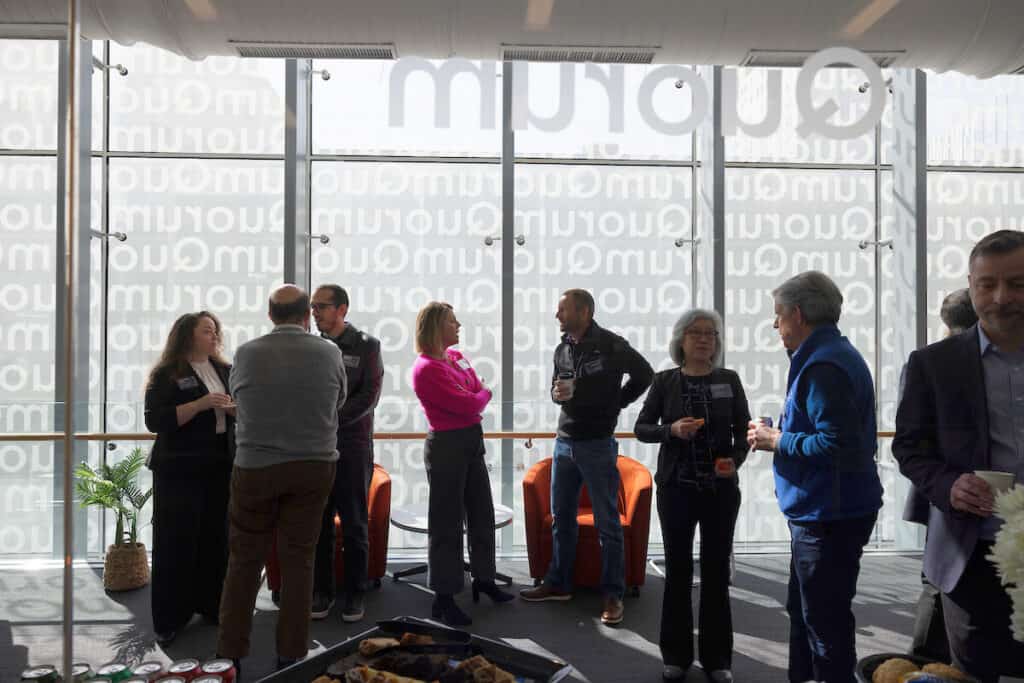The Delivery of Hope: Reflections from the 2025 EE Scientific Symposium on Gene Delivery

For the final 10% of the cystic fibrosis (CF) community—those who do not benefit from mutation-targeted therapies—the wait for a lifesaving breakthrough has been challenging. For many, these are more than just years of waiting; they’re years spent fighting for every breath. In the traditional timelines of science, progress takes time—but for those with CF, time is something they simply can’t afford to lose.
At Emily’s Entourage (EE), we refuse to accept the status quo. We are racing against time to drive scientific innovation, breaking barriers that stand in the way of a future where everyone with CF has effective mutation-targeted treatments—and ultimately, a cure. Gene-based therapies hold extraordinary promise for the whole CF community and especially for the final 10%. But one of the greatest challenges remains: delivery.
From February 23-26, the 2025 EE Scientific Symposium, The Delivery of Genes: Advancements and Challenges Through a CF Lens, convened over 100 of the world’s top experts in gene therapy, gene editing, and infection research from seven countries at the Quorum at the University City Science Center in Philadelphia. This year’s discussions tackled one of the most pressing obstacles to progress: how to safely and effectively deliver nucleotide-based therapies.
As we reflect on the outcomes of the symposium, we are filled with both optimism about the promise of nucleotide-based therapies and renewed determination to get there as fast as possible.
Key Takeaways from the 2025 EE Symposium
 1. Rewriting the Genetic Code: The Latest in Gene Therapy
1. Rewriting the Genetic Code: The Latest in Gene Therapy
At the heart of the symposium was a bold ambition: to correct CF at its source—the genetic mutations themselves. Scientists presented major strides in prime editing and other CRISPR-based tools, which have the potential to repair defective CFTR genes at the DNA level. These advances are laser-focused on mutations that are genetically ineligible for existing CFTR modulators.
Even more revolutionary was the discussion on fetal therapy, an approach where gene-editing tools could potentially correct CF mutations before birth. Imagine a future where a child with CF is born without the burden of the disease—this is no longer just science fiction.
For the final 10%, these advances mark a transformational shift—one that could redefine how CF is treated, moving us toward a true one-time cure, rather than just symptom management.
2. Tackling the Infection Crisis: New Tools Against Deadly Pathogens
For people with CF, lung infections remain one of the most serious and life-threatening challenges. At the symposium, researchers introduced promising treatments that could significantly change the way we combat these infections:
- Silver nanoparticles that kill common bacteria in the CF community, including Pseudomonas aeruginosa, Burkholderia cepacia, e Staphylococcus aureus, while eliminating the risk of bacterial resistance.
- CRISPR-engineered bacteriophages, which act as precision-guided weapons that break down biofilms, the sticky protective shields that bacteria use to evade antibiotics, to effectively fight the infection.
- DNA-encoded monoclonal antibodies, which can be programmed to recognize and neutralize harmful bacteria before they even cause an infection.
These innovations provide hope for a future where persistent, untreatable infections are no longer a daily threat.
3. Enhancing Gene Therapy with an Unexpected Ally
One of the most exciting discussions centered around hypertonic saline—a widely used CF treatment that may enhance the effectiveness of gene therapy.
Preliminary research suggests that hypertonic saline may increase the uptake of viral vectors used in gene therapy, improving how efficiently new genetic instructions are delivered to CF cells. If validated, this discovery could mean a more effective and reliable way to deliver gene therapies to the lungs and faster progress toward clinical trials, using an already FDA-approved treatment
This represents an exciting opportunity to expedite the development of and improve the efficacy of gene-based therapies—using an approach that builds on existing CF care.
 4. Accelerating Access Through Innovative Trial Designs
4. Accelerating Access Through Innovative Trial Designs
Traditional clinical trial models can pose challenges for ultra rare populations, including the final 10% of the CF community. Finding a way to advance multiple therapies through clinical trials despite the smallness and global distribution of the final 10% is critical for accelerating drug development. A key discussion at the symposium centered on innovative trial designs that could streamline the path to approved treatments, including:
- Master protocols, which create a more flexible trial framework that allows multiple therapies to be evaluated simultaneously under a single overarching protocol. The result is participants can be matched with therapies based on their specific mutations—maximizing efficiency and accelerating progress.
- Adaptive trial designs, which enable real-time modifications based on patient responses, increase efficiency of trials and the likelihood of identifying successful treatments.
These strategies represent a promising shift toward a more nimble, efficient, and person-centered approach—one that ensures potential therapies reach those who need them as swiftly as possible. This will be essential for advancing the next wave of gene-based therapies. Also, these approaches will be applicable to many other rare diseases and rare mutations of rare diseases.
5. Unleashing the Potential of RNA-Based Therapies
RNA-based therapies represent another promising new therapy for the final 10%, offering a cutting-edge approach to restoring CFTR function. Key highlights included:
- Lipid nanoparticle (LNP) engineering technologies, which use engineered molecules to deliver CFTR mRNA or DNA to target cells in the lungs.
- mRNA-based therapies, which enable cells to produce functional copies of CFTR protein, restoring CFTR activity even in those with nonsense mutations.
Unlike traditional gene therapies, these approaches do not create permanent genetic modifications, which could streamline development, clinical trial enrollment, and regulatory approval.
For the final 10%, RNA-based therapies could mark a major leap forward, bringing them closer than ever to the transformative treatments they have long awaited.
 Why This Matters
Why This Matters
The goal of the symposium was to convene leading minds from within—and outside—the CF scientific community, and industry to share openly, collaborate, question, think big, and ultimately spark new, promising, and expedited pathways forward. After all, scientific breakthroughs mean nothing if they don’t reach the people who need them most.
By uniting visionary leaders from academia, biotech, and pharma, we reaffirmed a fundamental truth: unlocking gene-based therapies takes a collective, relentless effort.
At EE, we refuse to let anything stand in the way of progress. The momentum from this symposium has only strengthened our resolve. With unwavering determination, we are pioneering the path forward
We are profoundly grateful to our symposium chairs—Kevin Foskett, PhD, Isaac Ott Professor of Physiology at the University of Pennsylvania’s Perelman School of Medicine; Joan Lau, PhD, MBA, CEO at Spirovant Sciences, Inc.; and Paul McCray, Jr, MD, professor of pediatrics-pulmonary medicine at the University of Iowa—whose leadership made this gathering a success.
We also extend our deepest appreciation to our sponsors, including Dream Team sponsors, Viatris, 4D Molecular Therapeutics, Vertex Pharmaceuticals, Inc.; Violet-Level sponsors, ReCode Therapeutics e Fundação Boomer Esiason; as well as our Welcome Dinner sponsor and Purple- and Magenta-level sponsors. Their support makes this event—and the groundbreaking progress it fosters—possible.
Together, we are driving innovation, igniting hope, and charting a future where 100% of the CF community has access to lifesaving treatments. No one should be left behind.
